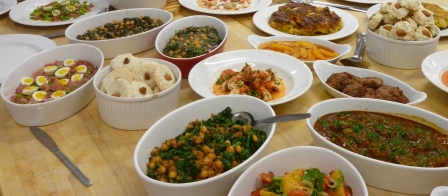News
Waste Less Food
According to Zero Waste Scotland we waste around 1.35 million tonnes of food and drink every year. This is a shocking figure and the Scottish government has set a target of reducing waste by a third by 2025. In order for this to become a reality we all need to do our part. So, from the perspective of a cook, here are my thoughts on how we can each do our bit by shopping smarter and using leftovers better:
It is very easy, when doing a weekly shop, to buy more food than you need, but that doesn’t need to always be the case.
I always go to the supermarket armed with a list and a pretty good idea of what we will be eating each day. It is easy to be seduced by the offers, but you need to stop and think whether you will be able to use all the food before it goes bad. The “use by”, “sell by” and “best by” codes on the food we buy can also be misleading. These codes are important particularly for certain foods like meat and fish, but when fruit or vegetables are sold packaged, we can be a little bit more lenient Sometimes the fruit hasn’t even ripened and according to the packet it is already past its use by date but it would be ridiculous to throw it out.
Here are suggestions for using our leftovers better:
Herbs: Chop up and put with a little water into ice cube trays. Chuck a cube into a sauce, soup or casserole when needed.
Slightly bendy root vegetables: These are still perfectly good to use and can be made into soups or cooked and pureed to go with meat. They also freeze well to use later.
Fruit: Make into smoothies, or poach a mixture of apples, pears, plums or kiwi to make fruit compote. You can also turn wrinkly apples into a puree. Alternatively they can be chopped or grated then added to cakes. Those brown bananas in the fruit bowl are also great in cakes when mashed up. Alternatively, freeze whole bananas to put in a fruit smoothie.
Cheese: Always grate cheese that is going a little hard and put in a bag in the freezer. The end of Parmesan can be added to soups to give extra flavour.
Bread: If bread goes stale, catch it before it goes mouldy and use it to make croutons by breaking it up into chunks, including the crust, and sprinkling with extra virgin olive oil before putting into a hot oven for 5 – 10 minutes. These are then delicious when added to salads or soups. You can also use stale bread to make breadcrumbs and keep them in the freezer.
Ginger and garlic: Grate ginger and garlic and open freeze teaspoons of them on a tray. Once frozen take them off the tray and store in a freezer bag. They keep for about 4 months. These can be thrown straight into the pan when making curries or sauces, which saves the need to buy fresh every time.
Carcass of a roast chicken: Always make stock from the bones of a roast chicken. Put the bones into a pan with cold water, onion, peppercorns and a bayleaf and bring to the boil. Turn down to a low simmer and cook for at least 2 hours and then strain into a bowl. Allow it to chill and then remove the fat. It can be boiled down further and stored in the refrigerator or frozen and then used for soups, sauces and casseroles.
These simple tips are an easy way to reduce waste, save the planet and save money on your weekly shop.

